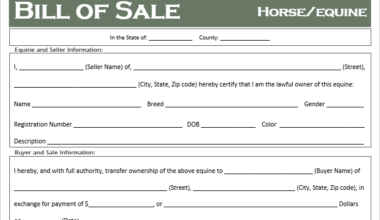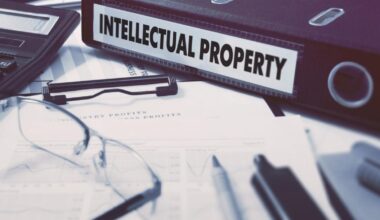Easements are a type of real estate law that defines the precise property rights of landowners and other parties. They grant other people or organizations permission to use the land for a specific purpose while remaining the property owner. Prescription agreements, which emphasize enjoyment and open use of lands over time, are one sort of easement purchase. This article will define easement by prescription legally in California, the factors required before an agreement can be made, and provide a real-world example to help you understand.
What Is an Easement By Prescription
A prescriptive easement, sometimes known as an “easement by prescription” is a legal position that allows a person to access someone else’s property for very particular purposes. Easements by prescription arise when an individual continuously and openly uses a portion of another person’s property without the owner’s permission.
This is especially often in rural areas when a landowner fails to realize that their property is being used. When a neighbor builds a fence on the land, this is an example of a prescription easement. If the encroachment is not recognized or addressed within a particular time frame, the neighbor may establish a legal claim to utilize the land. The duration varies greatly per state.
Easements by prescription are one example of an appurtenant easement, which arises when two properties are united as dominant and servient estates. The dominant estate owner has the easement, whereas the servient estate owner’s land is being encroached upon by the dominant owner.
Easement by Prescription Elements
To acquire an easement by prescription on encroached land, four legal requirements must be met:
#1. Open and Notorious Enjoyment
The pleasure must be known to the landowner, and a prescriptive easement cannot be obtained if the landowner is uninformed of the activity that is taking place. This does not imply that the person seeking the easement has interacted with the landowner in writing or verbally, but rather that they have given constructive notice. In other words, the proprietor would have observed the use and openly permitted it to occur.
#2. Uninterrupted and continuous
The person seeking the easement must also demonstrate that they have been regularly using the property. It is critical to distinguish between continually and continuously. Consistent and regular use, such as a vehicle going overland once per day or seasonally using the land each summer, is all that is required, rather than continuous use. The landowner’s ongoing use of the property must not have been stopped in the past, with no confrontation or disputes over the activity. However, if the action is interrupted by another party, the ability to construct an easement is unaffected.
The length of time that continuous usage must have occurred, known as a statutory period, is governed by state law and varies by jurisdiction, but commonly ranges from five to thirty years. In Colorado, for example, the user must have been present for at least 18 years. California, on the other hand, has a statutory duration of only 5 years. This period extends from when the person first began using the property for recreation to the present day.
#3. Without Permission
The user must also be hostile to the landowner and in contradiction with the interests of the owner, such as a trespasser utilizing the land as an access route. A prescriptive agreement cannot be enforced if the owner has granted authorization for anybody to carry out the activity on their property. For example, if an owner posts signs around their property declaring that others are welcome to cross, they have permitted it, which means the non-owner cannot construct a prescriptive easement.
#4. Actual Physical Use
The final and most obvious requirement is that the land can be physically used by the person. There is no way to claim an easement by prescription unless the trespasser is physically present on the land.
Easement By Prescription California
As real estate values continue to rise, California residents should be cautious of the risks that prescriptive easements represent to their property rights. An easement is a limited permission to utilize another’s a real property without owning it. A prescriptive easement is a legal privilege granted to one party (the dominant estate) to use or access the property of another for a specific purpose and for a set amount of time without the approval of the other.
In general, an easement by prescription in California consists of four (4) components:
- Land use must be open and obvious;
- Continue and be uninterrupted for at least five (5) years (occasional usage, for example, on weekends, could establish the prescription use right for the same frequency);
- Be hostile; and
- Subject to a right claim (i.e., not consented to).
According to Grant v. Ratliff, 164 Cal. App. 4th 1304, for the user to be adverse, it must be hostile. Consent, in other words, is a comprehensive defense to a prescriptive easement. The five-year period begins when the dominant estate begins to use the servient estate unfairly and without consent.
Related Article: WRAP AROUND MORTGAGE: Definition, Pros & Cons, and Example
In California, an easement by prescription can result from something as simple as a pedestrian crossing a parking lot of a local company once or twice a week to gain access to a neighboring property. While the action may appear innocuous, the pedestrian may effectively argue that it is his or her right to cross the parking lot after five (5) years of doing so. This reality is not simply inconvenient; if the pedestrian formalizes the prescriptive easement by bringing suit, it may generate issues when the servient property owner wishes to sell.
In general, the burden of proof falls on the party asserting prescriptive rights, who must meet the clear and compelling evidence standard. McDermott v. Connolly, 162 Cal. App. 3d 973. Clear and persuasive evidence requires that the evidence offered to be greatly and significantly more likely to be true than false, resulting in a solid belief or conviction in its veracity.
Easement by prescription cases in California are exceedingly fact-intensive by nature, and a case is more easily presented with images and paperwork that indicate the use and evidence of the length of time that use has lasted. Whether you’re seeking to show or dispute the existence of a prescriptive easement, thorough documentation is essential.
Easement By Prescription Example
Consider a few examples of how an easement can create legal rights in favor of a person.
#1. Access to the driveway
An example of easement via prescription rights would be using your neighbor’s driveway to access your own. If you utilize your neighbor’s driveway in a continuous, hostile, and open manner for a long period of time, you will eventually gain the right to file a claim for a prescriptive easement.
#2. Access to the lake
Another example of an easement by prescription is when you need to use your neighbor’s land to access a lake.
If you use your neighbor’s land openly and continuously for many years without your neighbor’s permission, after the legally allowed deadline, you can claim prescriptive easement rights to continue using the land.
#3. Construction of a fence
The most common example of an easement by prescription is when a fence is built on the wrong side of a property’s borderline; crossing into land owned by another person. The continuous and actual aspect is satisfied if the neighbor was constantly traveling up and down the strip of land that legally belonged to another. The owner of the other property can see a fence being built, which accounts for the open part.
As a result, as long as the landowner does not expressly authorize the non-owner to use the strip of land; a prescriptive easement can be obtained after the number of years necessary by state law has passed. The agreement does not grant the neighbor permission to trespass on the entire property; but only on the little plot of land between the property line and the fence.
Adverse Possession vs. Prescriptive Easement
Many similarities exist between prescriptive easement and adverse possession. They are awarded in identical ways, with a trespasser entering the property and claiming it as their own.
The distinction is one of ownership. A prescriptive easement grants the trespasser the right to use the land but not ownership of the land; the trespasser thus becomes the easement holder. In an adverse possession case, the trespasser is awarded ownership of the land and is required to pay taxes on it.
How To Avoid easement by prescription in California
It is easier to avoid a prescriptive easement than it is to remove an existing prescriptive easement. A property owner or a potential house buyer might avoid them in two ways.
The simplest solution is to prevent the trespasser from entering your property in the first place. This necessitates noticing and disputing the persistent use. This is the most confrontational option and may harm your relationships with your neighbors.
Another option to prevent an easement by prescription in California is to grant the trespasser permission to utilize the land. This avoids the adverse and hostile requirements in this situation, reducing any issue about establishing a prescriptive easement.
Conclusion
Easement through prescription serves a purpose. They encourage landowners to productively use their property, and if a trespassing neighbor is publicly using it; it allows the neighbor to claim easement ownership or a right to property usage.
When purchasing a home, you should be aware of the presence of a prescriptive easement. Consult your real estate agent to see whether this is anything to think about.
Frequently Asked Questions
What is a prescriptive easement in Illinois?
PRESCRIPTIVE EASEMENTS IN ILLINOIS. The legislation governing the establishment of easements by prescription, in general, requires the easement claimant to demonstrate that his use of another’s land was open, exclusive, continuous, and uninterrupted over the requisite term, 17 Ibid., at 170. (3).
What is a prescriptive easement in Oregon?
A “prescriptive easement” is a sort of easement in which one property owner obtains the legal right to use another property owner’s property for a restricted purpose without the need for a documented easement.
What is prescription in land?
Simply put, the right of prescription may arise where a person has been in continuous, undisturbed, and hostile possession of land for at least 20 or 12 years (for the state and people, respectively). The right of possession is presumed by the law. This prescription right is a shield, not a sword.
How do you prove a prescriptive right of way?
The following conditions must be met in order to establish a prescriptive right of way:
- The property owner must have exercised the privilege for at least 20 years without interruption.
- For the entire period, the right must have been exercised in the same manner, i.e., a right of way on horseback must have been exercised on horseback.






